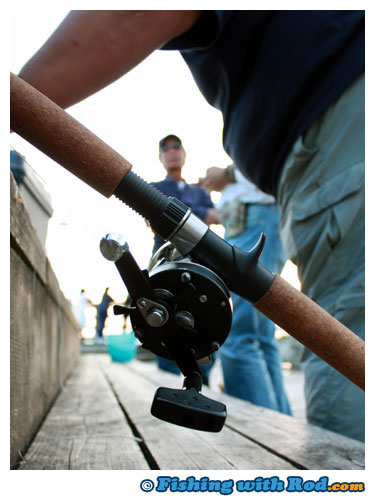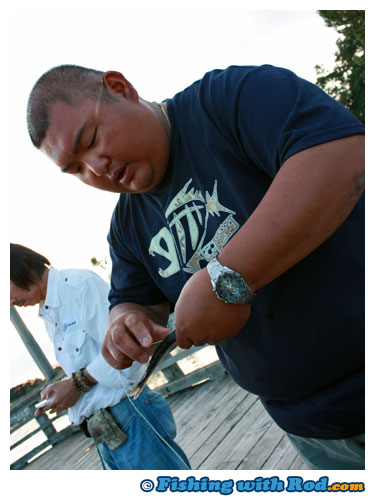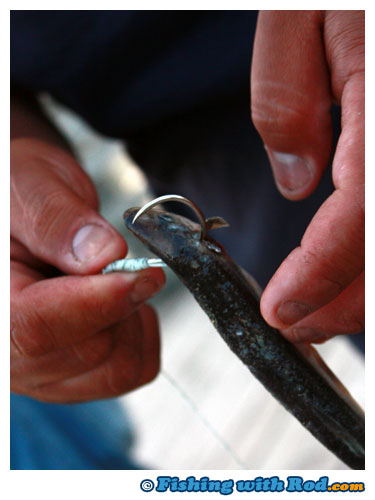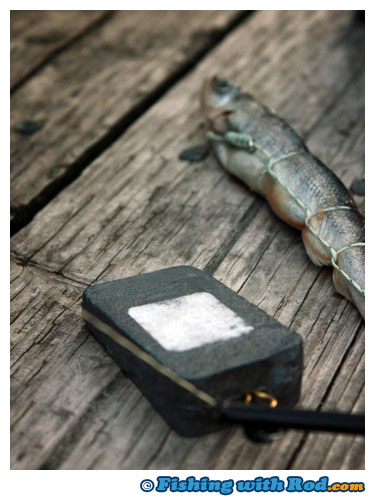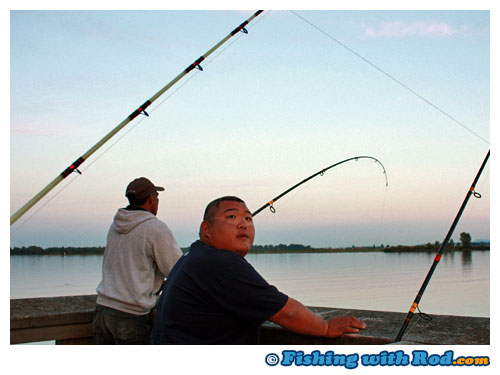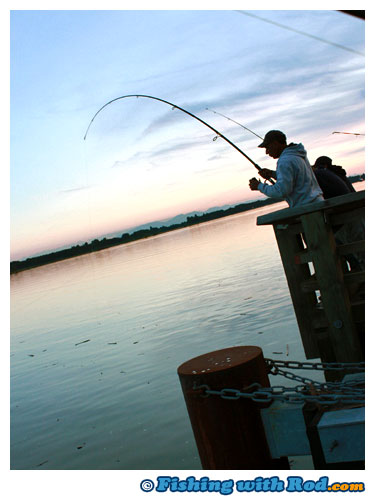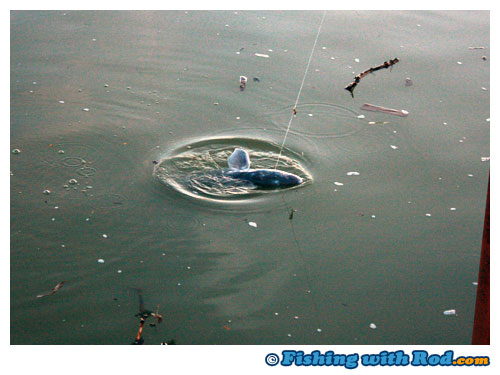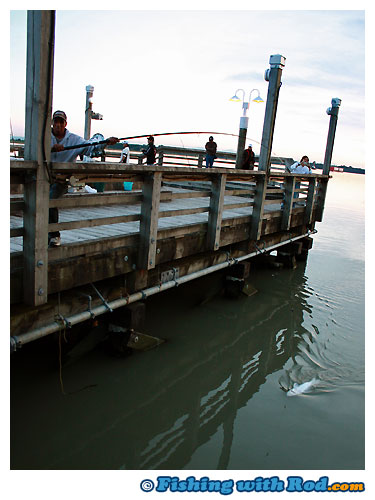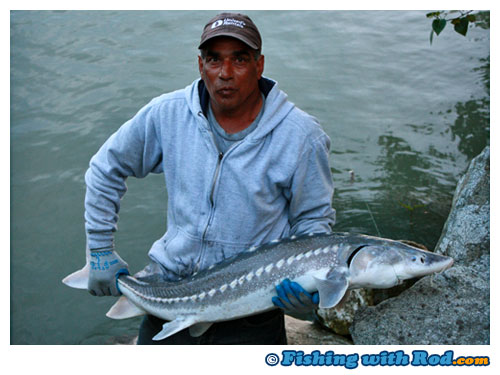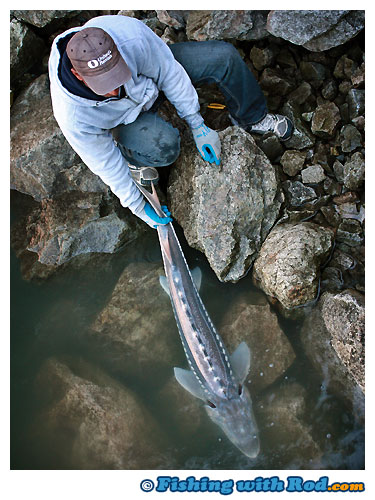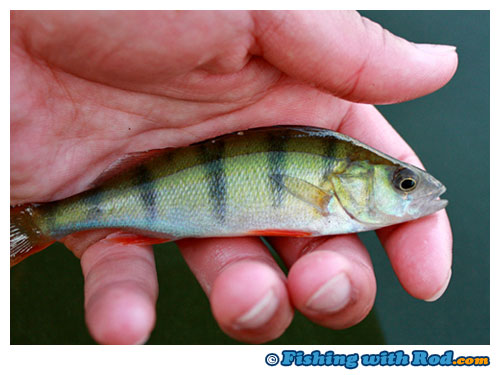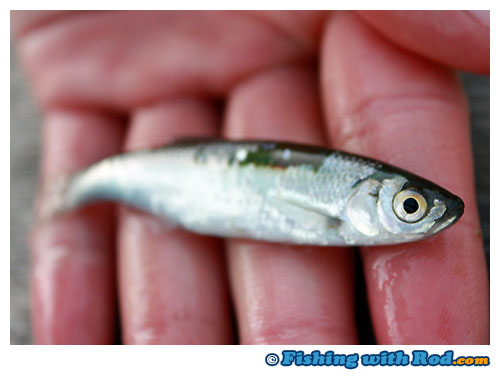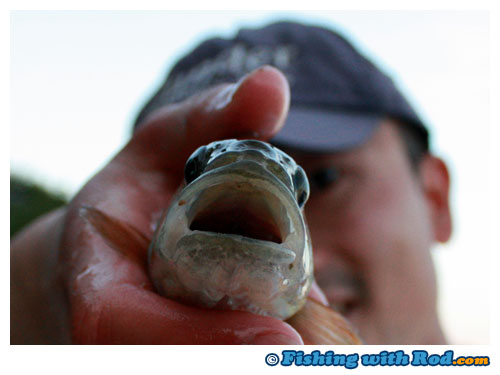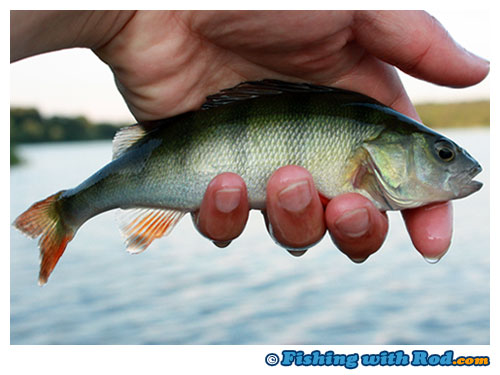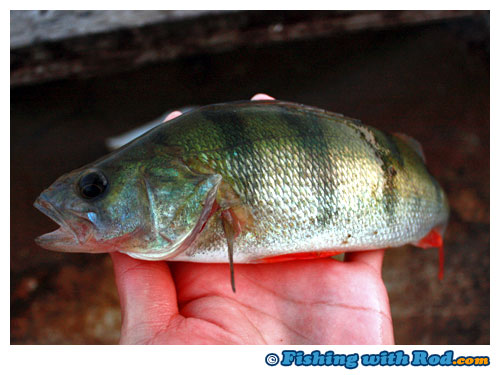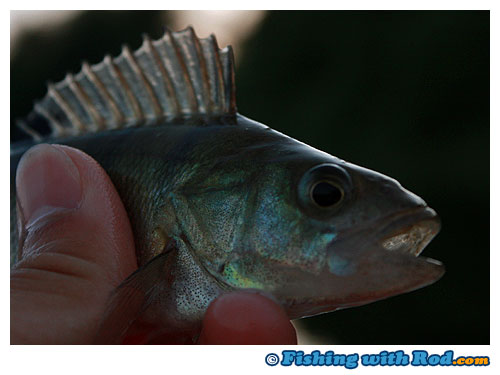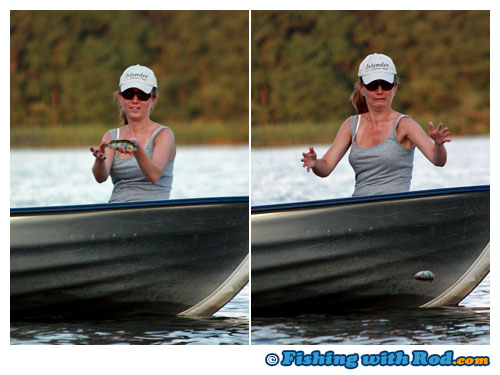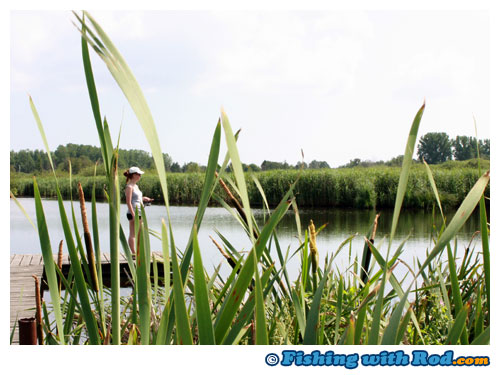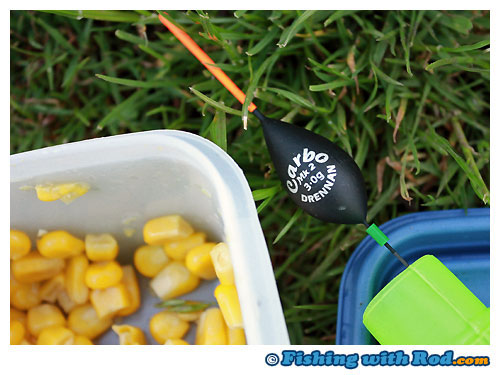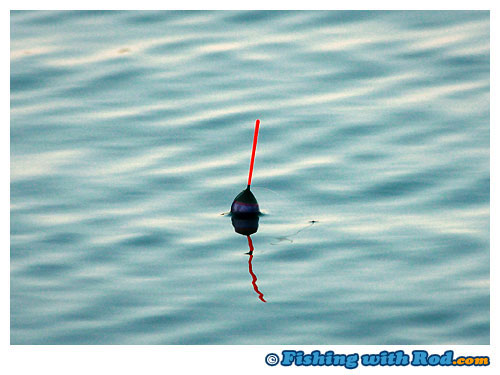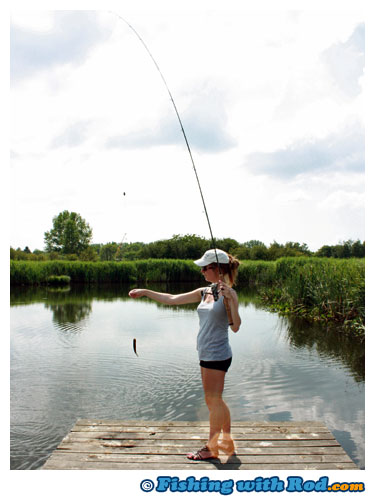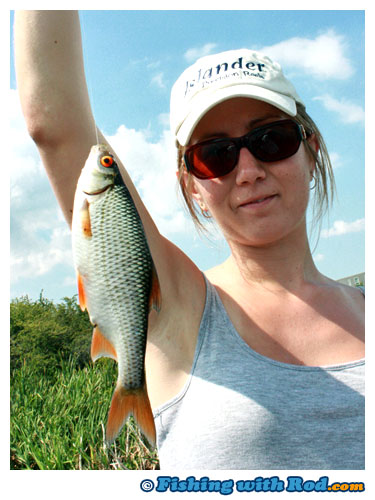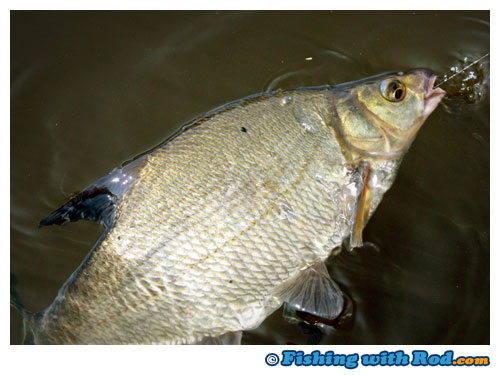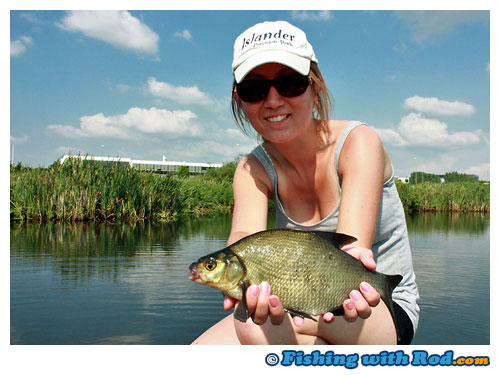Cooling off with some bait
Published on Saturday, July 18th, 2009
The temperature hit the 30C mark yesterday. A short walk to the bank had me drowning in sweat. I did not want to waste such a beautiful Friday evening, so I asked Carlo if he wanted to pay the North Arm of Fraser River a visit. Was the seasoned flyfisher willing to lose his dignity by digging into a worm container? Sure he said! We met up on the rocks at 8:00pm, just as the sun started tucking itself behind the trees. The air was much cooler, but it was still comfortable enough to be in a pair of shorts and T shirt.
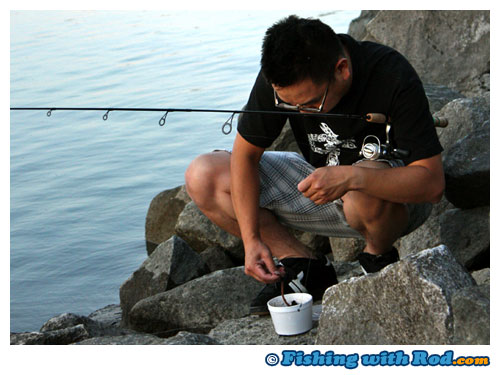
What kind of fly is that Carlo?
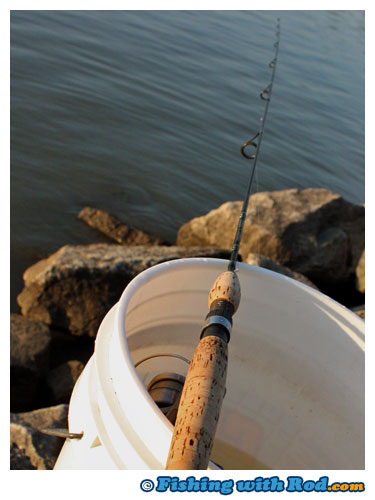
My bucket became a good substitute for a holder of my rod.
Before Carlo arrived, I had already landed a couple of fish, including a northern pikeminnow that was slightly bigger than average. The fishing is always unpredictable as long as a baited hook is left in the water. While most of the catches would be small sculpin, peamouth chub, the odd monstrous predatory fish may come along and stir up the party occasionally.
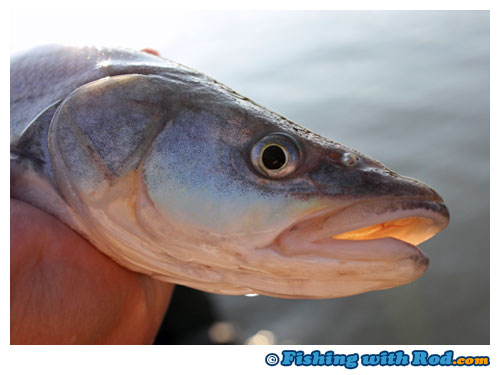
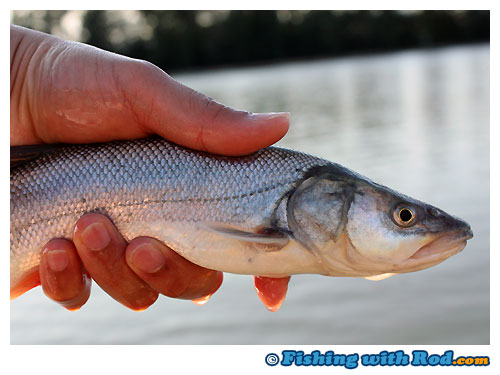
The nibbles came in waves. Normally they bite continuously, but it may have taken them longer to find our bait this time because of the lack of current, which would carry the bait’s scent around.
The minnows were not co-operating as well this evening, but the sculpins were having a feast. We reeled in plenty of coastrange sculpins, which do not grow much bigger than a few inches in length.
In between the little guys, I felt some big tugs. There were indeed something bigger milling about one point, I felt a gradual pull down of the rod tip. That is usually a good indication of a bigger fish, which sucks the bait into its mouth instead of nibbling at it. I pulled the rod back hard and it was bent to its maximum, but whatever was at the other end did not make a move. A snag perhaps? Not quite, the fish swam away from shore fast a second later, peeling line off the reel. It took me by surprise as I screamed. Carlo looked on and wandered what was happening. The entire event was over in a couple of seconds. The fish escaped with ease, most likely due to the small hook that I was using. It was either a really large northern pikeminnow or a bull trout.
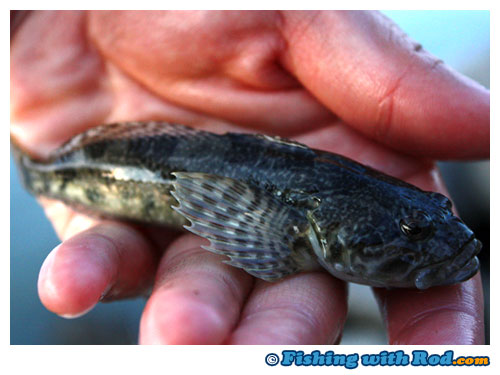
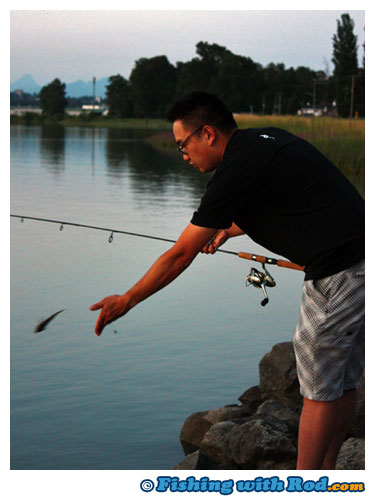
Just before it became too dark to fish, an animal creeped out of the marsh.
“Muskrat!”, I said.
Carlo replied, “That’s no muskrat. It’s huge! That’s a beaver! Unless it’s a muskrat on steroid!”
It wasn’t a full grown beaver, that’s probably why I thought it was not one. It circled around us as if we were intruders. I guess we were. The tiny angry beaver eventually slapped its tail around, hoping to scare us away. We left soon after, but mostly because the mosquitoes were coming out in full force.
Bait fishing on the Tidal Fraser, a great way to cool down after a hot summer day.

